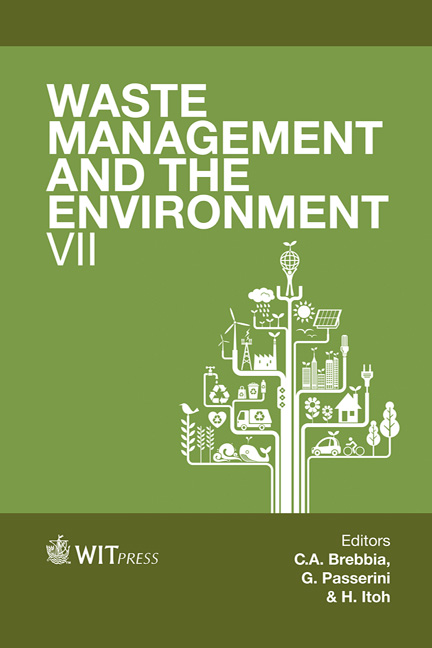The Physical And Chemical Properties Of Solid Waste From Water Tourism. Case Study: Taling Chan Floating Market, Bangkok, Thailand
Price
Free (open access)
Transaction
Volume
180
Pages
9
Published
2014
Size
657 kb
Paper DOI
10.2495/WM140091
Copyright
WIT Press
Author(s)
S. R. Tuprakay, P. Suksabye, P. Menchai & S. Tuprakay
Abstract
Solid waste management represents one of the most challenging and perpetual issues for many developing countries in the world, especially regarding solid waste in important areas such as floating markets. Water tourism is at an ever rapid rate of growth and generates a lot of income into Thailand. The aim of this research is to investigate the physical and chemical properties of solid waste produced by water tourism in Taling Chan Floating Market, Thailand. The results showed five types of waste; food, plastics, paper, leaves and foam. The largest component of all was food waste, which accounted for 53.95% of total waste. Solid waste density was measured at 0.55 kg/m3 and the size of solid waste varied from 0.3–20 cm in width and 3–49 cm in length. The moisture content, combustion compound, ash, content of carbon, levels of hydrogen, sulphur, nitrogen and oxygen accounted for 65.76%, 82.0%, 6.17%, 45.56%, 5.03%, 0.1268%, 4.95%, and 44.24%, respectively. The calorific value of the waste was not high, measured at 4,170.46 cal/g, which included a low level of hydrogen content of 5.12%. Therefore, the solid waste from Taling Chan Floating Market was not suitable for combustive fuel due to its high moisture content. Regarding the level of heavy metal detection, it was found that As, Cd, Cr, Cu, Hg, and Pb were 2.490 ppb, 0.127 ppb, 18.853 ppb, 0.175 ppb, 5.103 ppb and 34.762 ppb, respectively. The levels of heavy metal detection here were still in the range of the Thailand soil quality standard. The heavy metal and nitrogen contents also showed potential for use as fertilizer or organic fertilizer. The
Keywords





